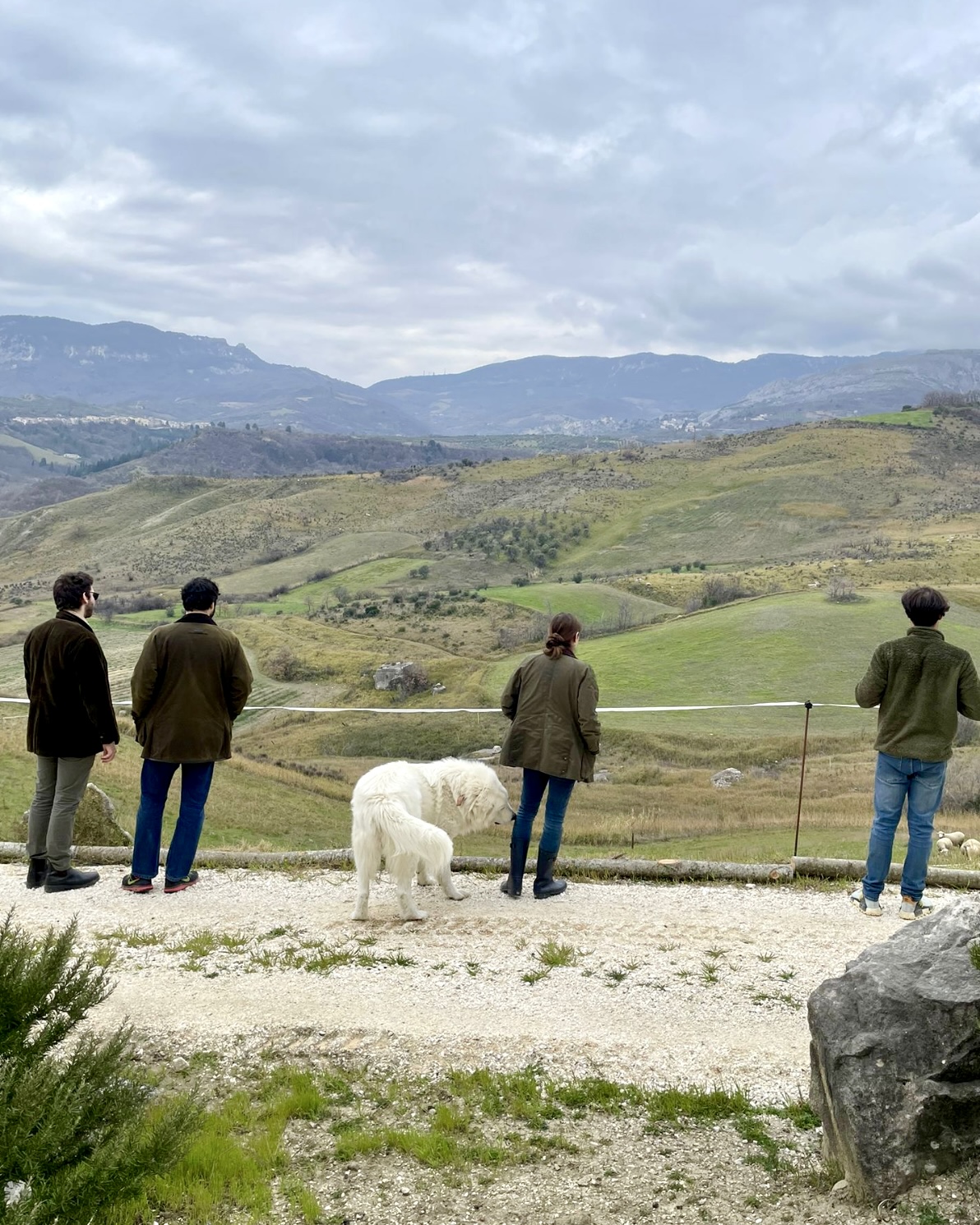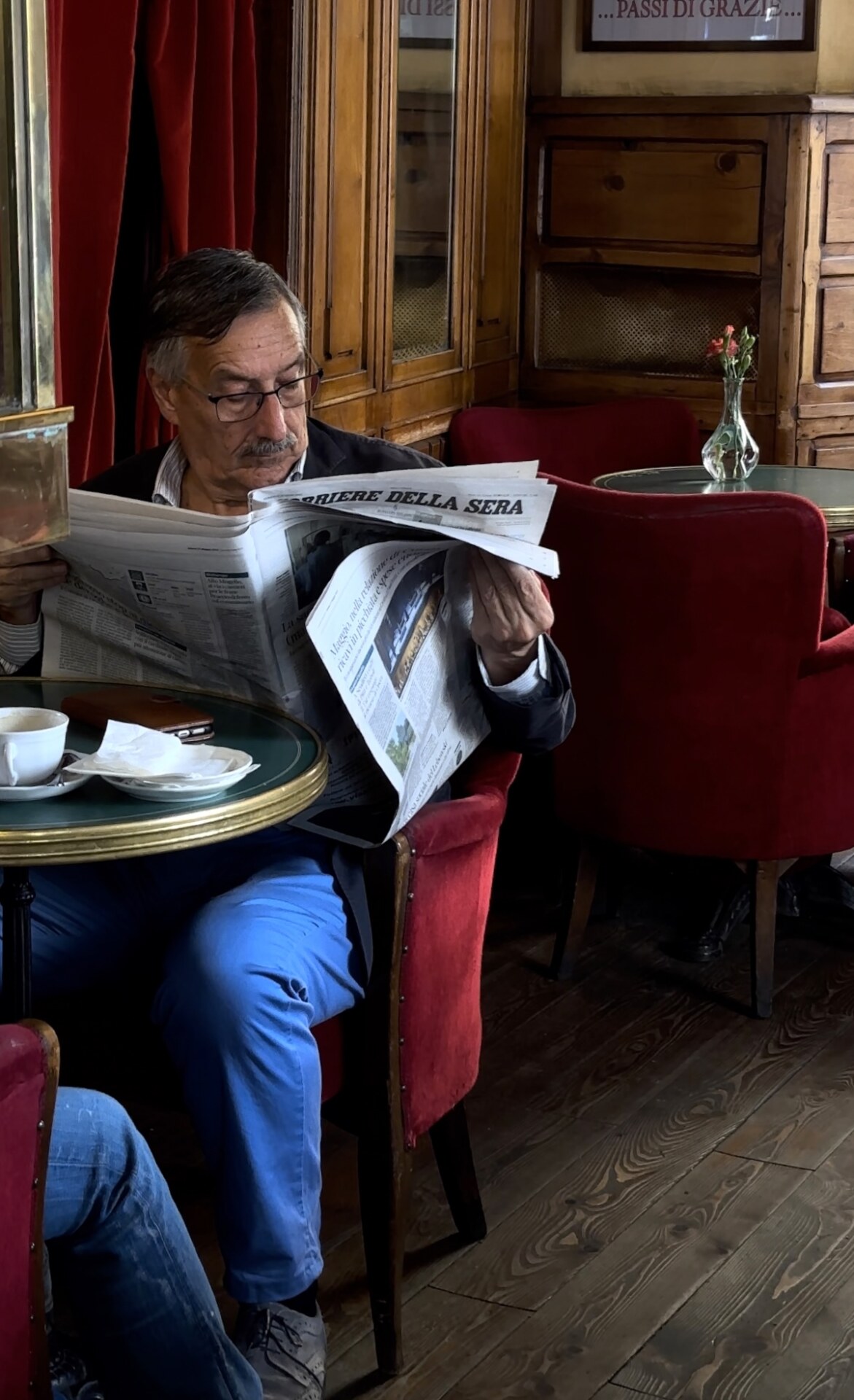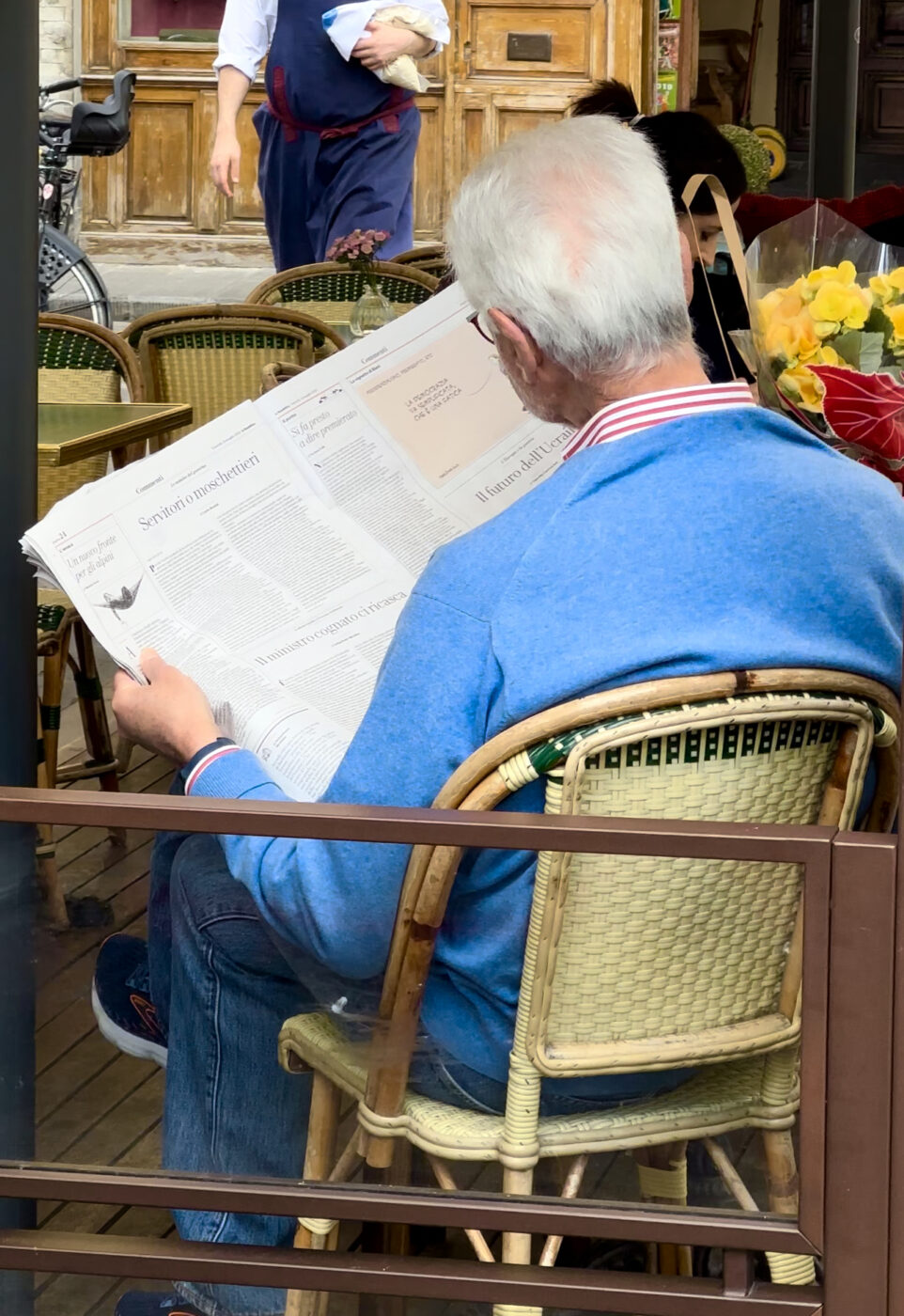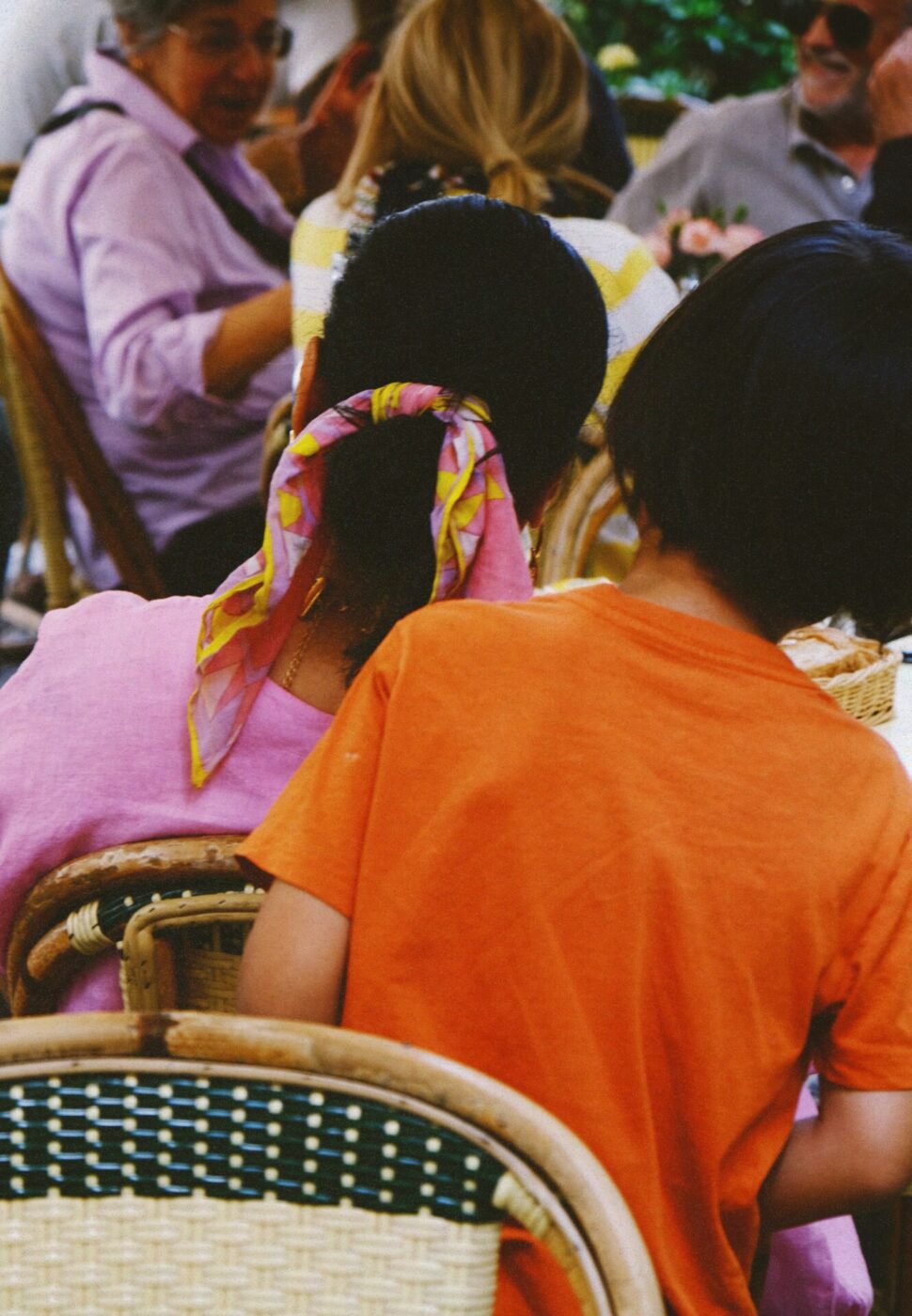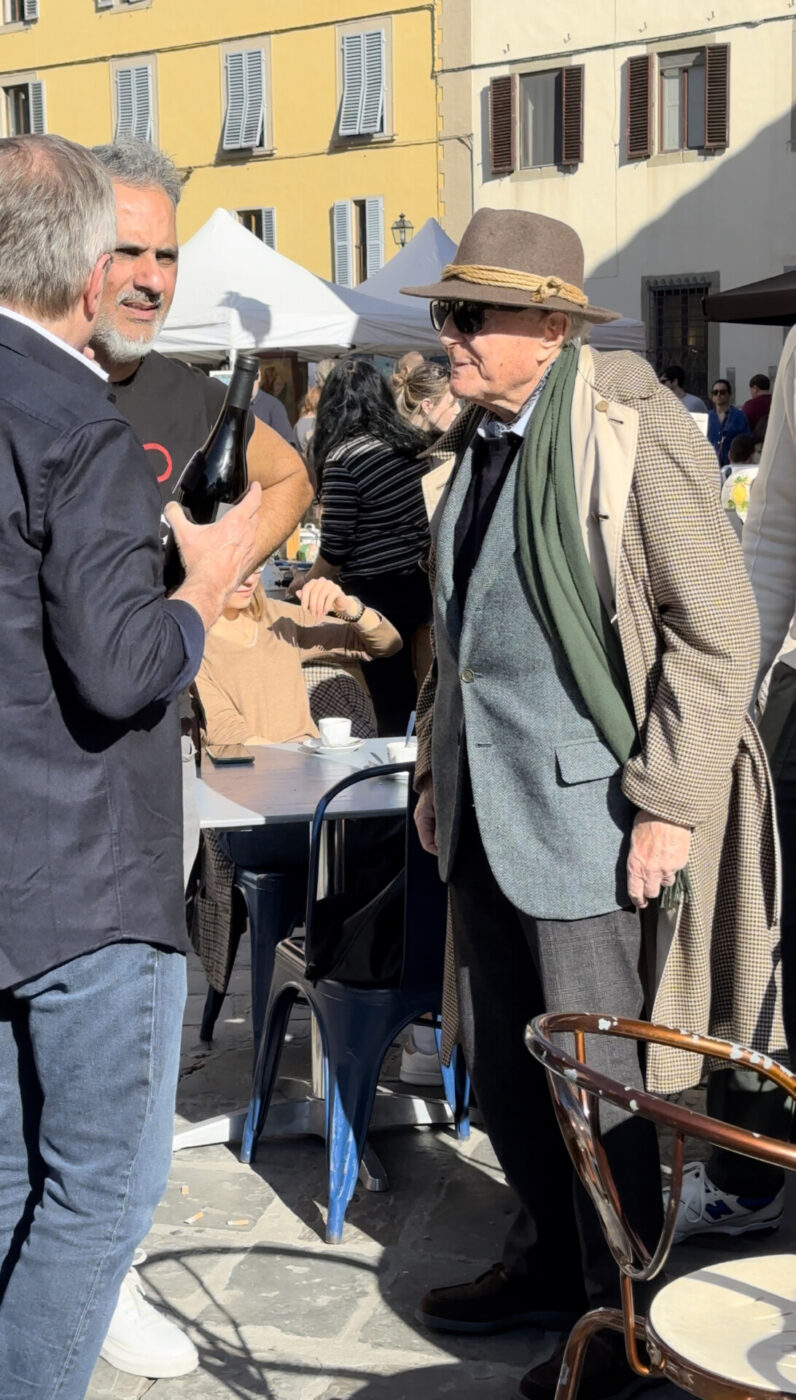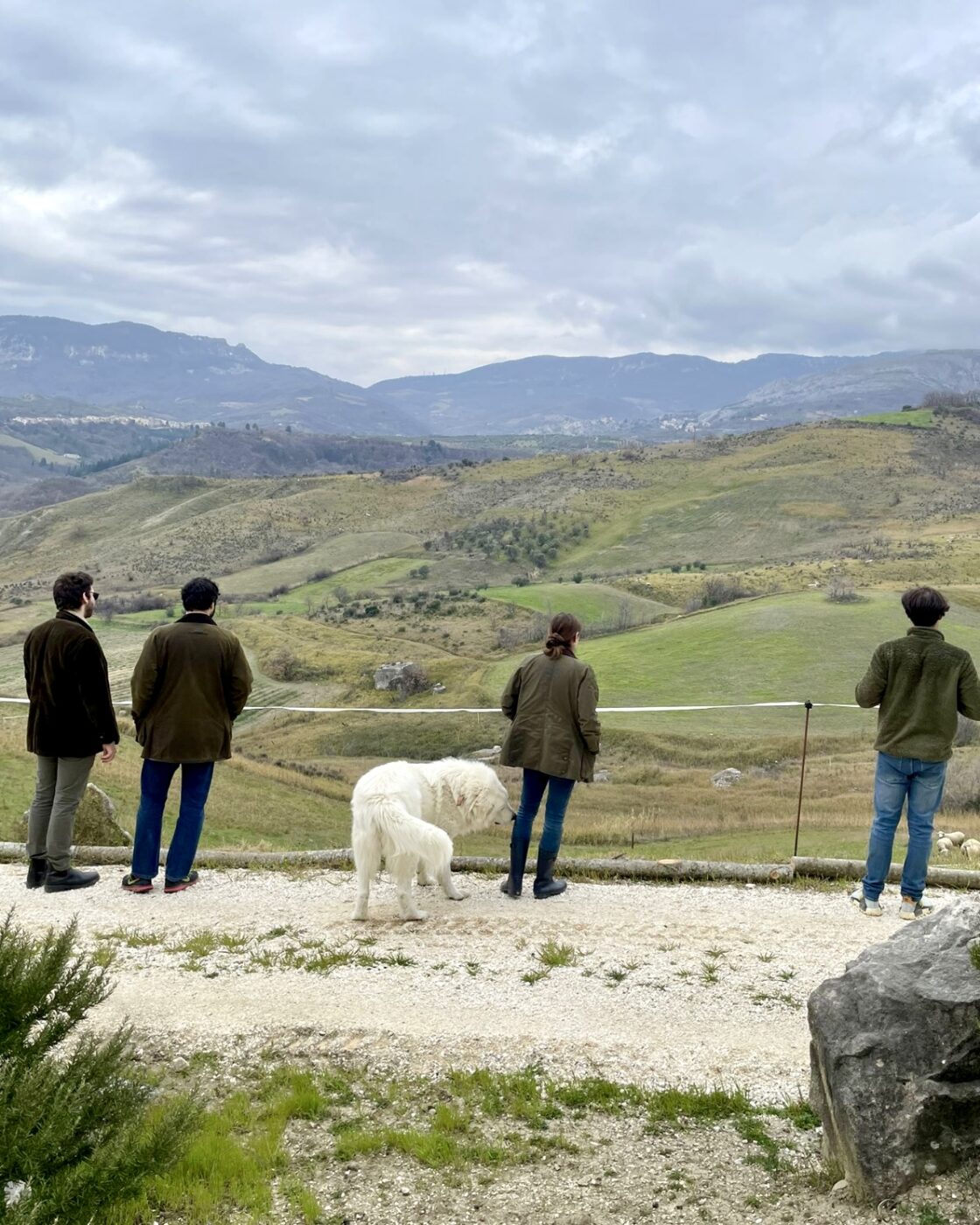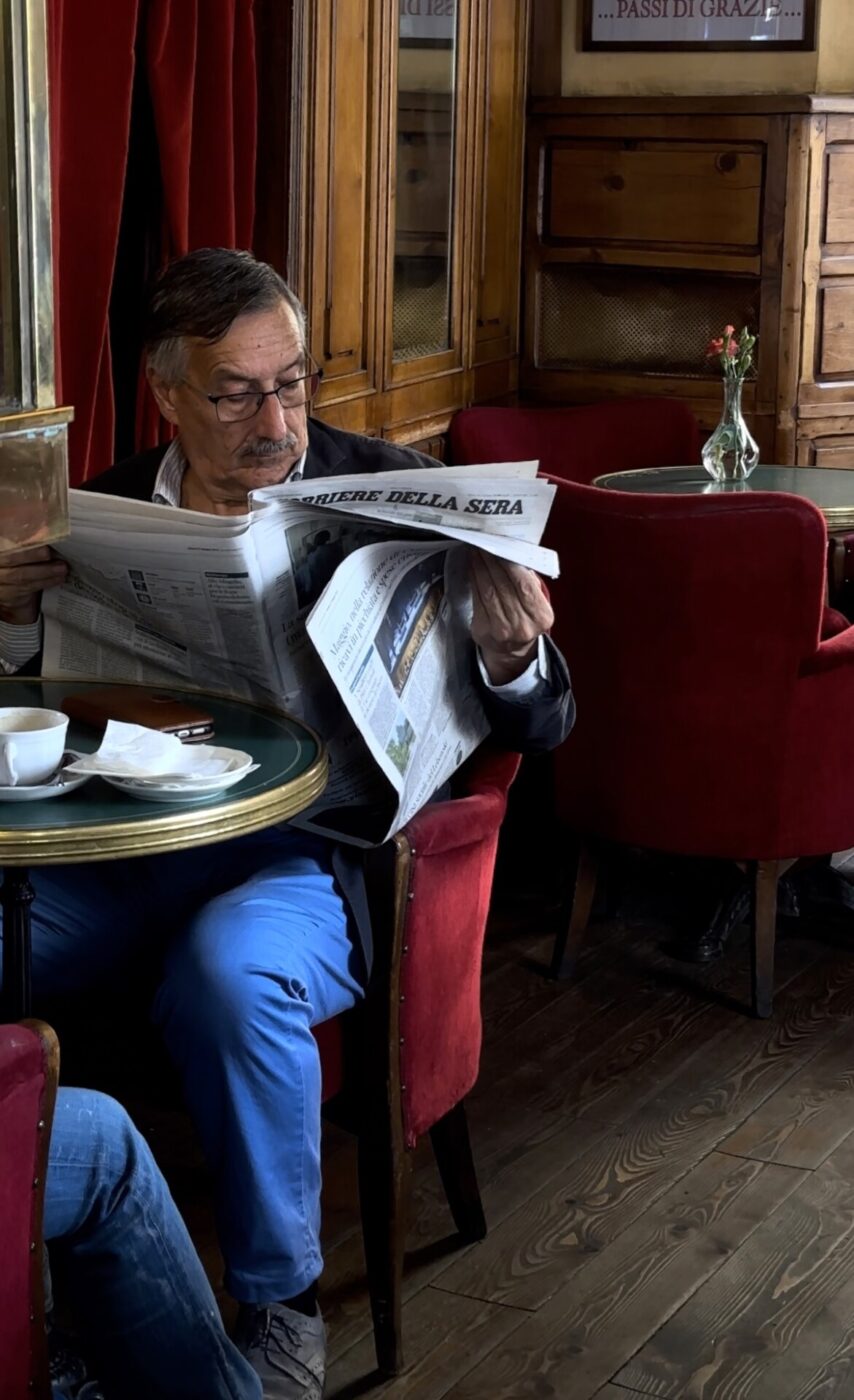It started as most Roman weekday mornings do: I was in a rush, and I wasn’t sure if I would make it to my destination on time. My friend and I were headed to Florence for the day, to the city of Brunelleschi’s dome, Michelangelo’s David, of red-tiled roofs flanked by mountains just in the foreground, as if to say, “We’ve always been here. Didn’t you know?”
I checked the time, doing the calculus in my mind. If we took the bus, even if it came as scheduled, there was no way we’d make the train. We’d have to take a cab.
“Where are we going today, girls?” the taxi driver asked me as we piled into the car. He knew we were headed to Roma Termini, and that meant only one thing: we were actually going someplace else entirely.
When he learned where that was, he offered a word of warning. “The Florentines,” he told us, “they are some of the meanest people you’ll ever meet. But they speak the best Italian you’ll ever hear.”
While I was skeptical of the former and intrigued by the latter, I wondered about a larger universal truth: what does it really mean to be Florentine?
*********
Florence—it’s overly simplistic to say it’s the stuff of dreams. But in a country practically founded on beauty, the city stands out in its sumptuousness, the impossibility of its narrow stone streets, the rusticated stonework of its stark yet inviting facades, the way the Duomo seems to be always imperceptibly looming at the end of a path, like a guiding light. It’s not just the sound of church bells that fill the air, as one expatriate told me, but the knowledge that each church has a different, recognizable ring.
Perhaps it is a testament to Florence that there are so many who were born there and have never left. These are the families who now frequent the same buche as their parents, the underground cellars of former palazzi where the menus, as one person I interviewed said, can remain unchanged for decades, down to the last comma. They are the very same who celebrate a pranzo della domenica or a family occasion at an agriturismo in the Tuscan countryside, because why wouldn’t you? The city is nothing if not a lush combination of urban energy and countryside quite literally at one’s feet.
It’s that mix of the natural and the spiritual that have birthed and inspired some of the world’s greatest writers and artists—Dante, Boccaccio, Petrarch, Botticelli, Leonardo da Vinci, Michelangelo, and Donatello. These are creators so famous that their mere last name triggers instant recognition.
But to live in the shadow of greatness is to always feel like the place you call home is not entirely yours. This phenomenon is borne out not just in emotion but in statistics. In 2019, right before the pandemic, Florence logged almost 16 million overnight stays from tourists, according to Statista. And when it comes to American students, the city is a haven. In 2023, roughly 18,000 American college students will study in the city, according to the president of the Association of American College and University Programs in Italy in La Repubblica. Considering that Florence has a population of almost 370,000 people, as of 2022, per Business Insider, the number of American students is about five percent of the city’s total number of residents.
This perhaps has shaped the stereotype of a Florentine: closed off, impossible to befriend, direct with a biting humor, and infused with an understated elegance. The Florentines are realistic about who they are and how they are perceived—they are able to turn those same qualities around on themselves.
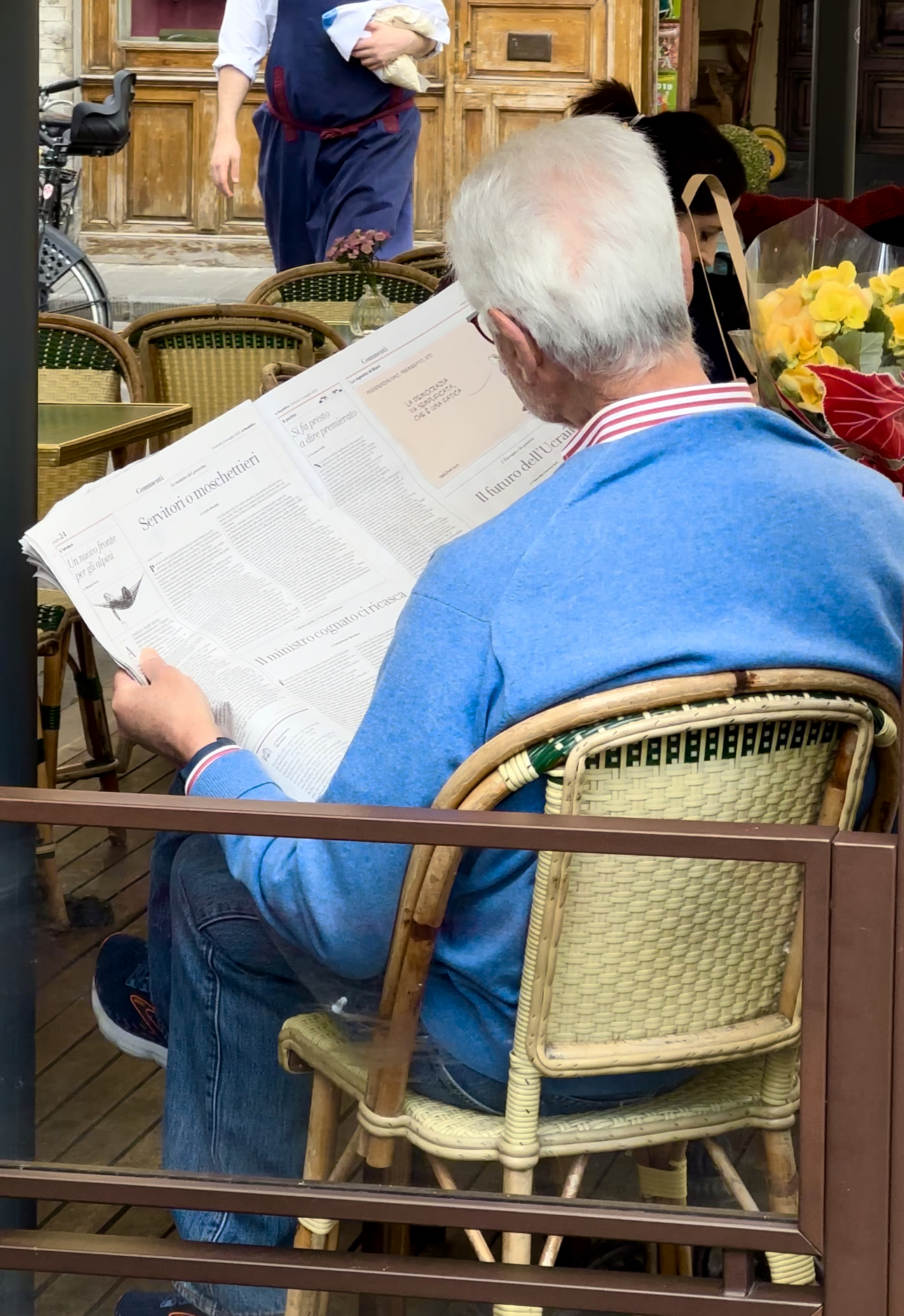
“Florence is a city that has made a great contribution to humanity, especially to the arts,” said Matteo Perduca, a lawyer-cum-designer whom some have called the very definition of a Florentine. “It is a distillation of rare beauty, and that beauty, understood in context over various periods of history, is never an end in itself. If we want to learn to understand Florence, it speaks to us about rising trends, exceptional people, innovative ideas, the capacity to attract excellence, the desire to always improve oneself, the spirit of sacrifice and self-sacrifice. It is a multifaceted representation of the ambition of some to leave a mark on history.”
This is the environment that forms and informs the Florentine soul, the very heartbeat that pulses throughout daily life. It is likely what makes Florentines so loyal to custom and tradition. The classic bistecca alla fiorentina, for example, is a dish that should be cooked “al sangue” (“bloody”). If unsuspecting restaurant patrons ask for the meat to be cooked any more than that, they could be turned away.
“If you don’t like a rare steak, you shouldn’t order bistecca alla fiorentina,” says Sandra Panerai, a lifelong Florentine who runs an Instagram account devoted to sharing highlights of Florentine and Italian life. “There are restaurants now that have begun to refuse to cook it any way other than rare.”
That same mentality—the idea of a natural order of things—comes out as well in the way Florentines dress. As I sit in a bar off of the Piazzale di Porta Romana with Elena Farinelli, a Florence-based content creator who has run a blog on the city since 2006, she points out an important truth. Florentines can be spotted by certain accessories: their sunglasses, their belts, their shoes, their jackets.
But the Florentine style is not all about rules and formality. Instead, it is a type of understated chic that Florentines sport, a look that represents the very dichotomy between urban-and-country that is their city: hunting jackets, loafers, and slim-fit slacks in an earth tone palette of greens, browns, and burgundies. Perhaps best described as “radical chic”, the Florentine style relies heavily on Barbour jackets and foulards–it is the home of Pucci and Ferragamo, after all. This is not the professional elegance of Milan or the sensuality of the south—it is something all its own.
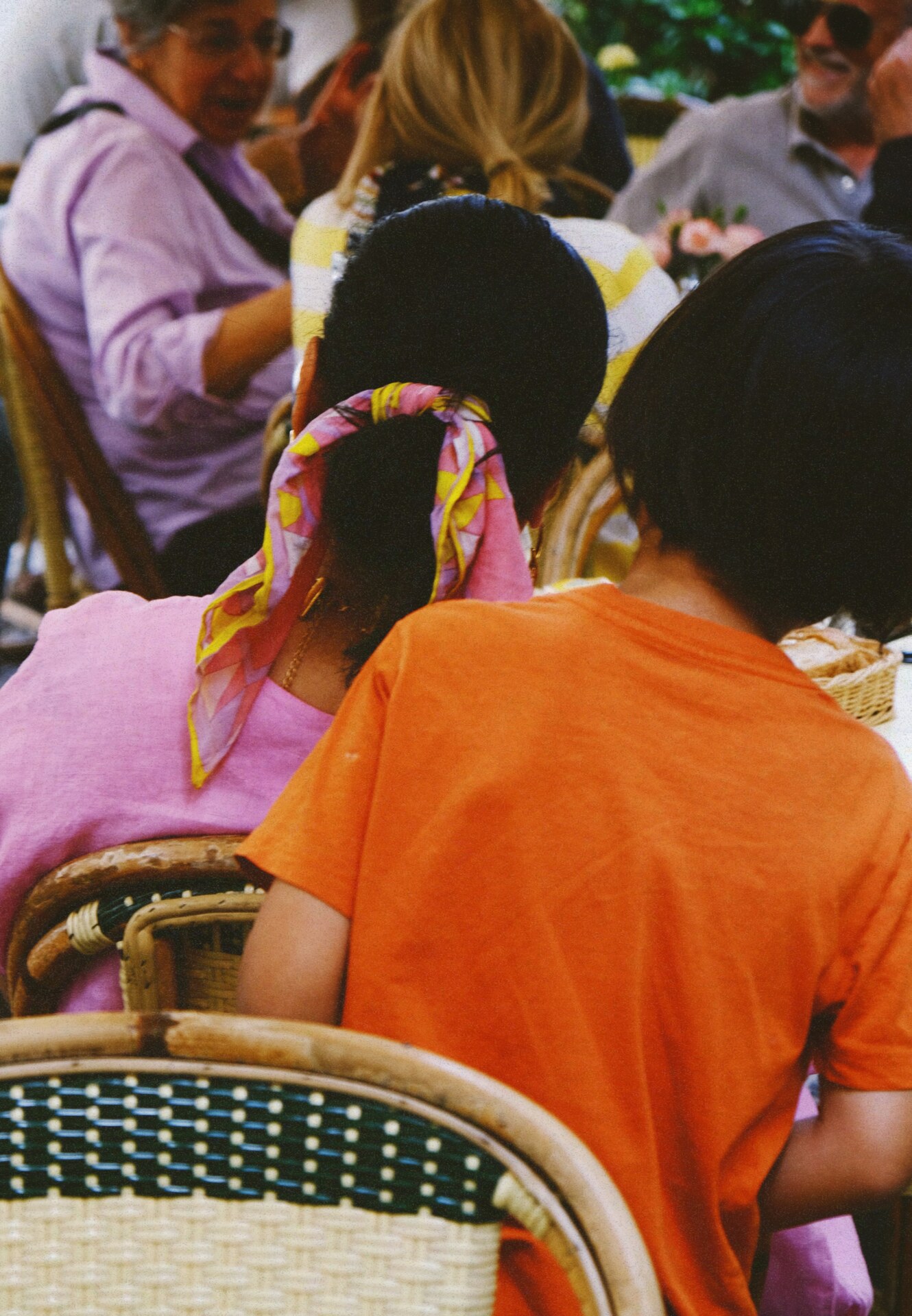
What Makes a Florentine?
It is that elegant simplicity, that understatement that makes the Florentine, says Andrea Bernini, co-owner of Florence-based coffee roaster Mokaflor, a company started by his father. It’s also an ability to not take the world—and oneself—too seriously.
“The Florentine has a biting personality and is cynical,” Bernini says. “They tend towards pessimism but in a teasing and good-natured way.”
Florentines are imbued with a strong sense of self, marked by a deep and almost protective love for their city and its beauty, says Alice Cheron, the French founder of an events and lifestyle blog dedicated to the Italian lifestyle who moved to Florence 12 years ago.
But there is an inverse to this: for all their elegance, their sense of humor, their directness, Florentines are also seen as closed off by southerners, says Perduca, and conceited by those from the north.
Whether these are simply baseless stereotypes or rooted in some grain of truth depends on your perspective. Communications manager Sofia Medina moved to Florence after having lived in Rome for four years. She had heard it all, possibly from my original taxi driver—the Florentines were snobs, they were stuck-up. But that’s not been her experience.
“I have found even the people who work at the mom-and-pop shops here are more open than Romans, more curious, asking questions about my life,” she says. “Maybe Florentines appear closed-off at first, but once you crack that shell, you’re family for life.”
The Florentines themselves are not so confident in their own openness. This has its roots, in part, in the way the city’s wealth is maintained—largely by the same families that founded it in the first place. A 2016 study by two Bank of Italy economists found the richest families from 1427 to 2011 had mostly stayed the same. The idea of generational wealth in Florence doesn’t just go back a few decades—it can go back as much as six centuries.
And even for those who were not among the richest families then or now, there might still be an air of superiority. After all, these are Florentines, born in the very place that UNESCO calls the “symbol of the Renaissance” and the “birthplace of modern humanism.” That breeds a sort-of ingrained superiority and may be why some Florentines view even other Italians with a suspicious eye. Growing up in the city, Bernini recalls the influx of students from southern Italy and other parts of the country.
“We didn’t have any contact with them—we didn’t want to,” he said. “We felt ourselves a little bit superior, a crude form of racism. We had a presumption born from knowing more, of having come from a more evolved society. This happened the opposite way with people from the north—we considered them the nouveau riche, wanting to show their wealth. But they only had money while we had a cultural heritage.”
You can’t walk into a bar and become friends with a Florentine, says Farinelli. These friend groups are formed from childhood, in high school, or in university—to break into these deeply entrenched social cliques is hard. It is a universal truth about Italy in general.
One day, Panerai took to her Instagram stories to survey her followers: do you think it’s true that Florentines can be cold and unpleasant, she asked? A number of the respondents said yes.
“It’s true that we are a little bit closed off at the beginning because, historically, we live in a city that we consider our home but that we also realize is everyone’s home,” Panerai says, referring to the fact that hospitality must be shown as well to the city’s many tourists. “We have to test people out a little bit but, once we are open, we are accommodating.”
Cheron compares the character of a Florentine to the facade of Palazzo Pitti: strong, imposing, and respectable. But if you can succeed in opening the door, you may find the tranquility of the Giardino di Boboli inside.
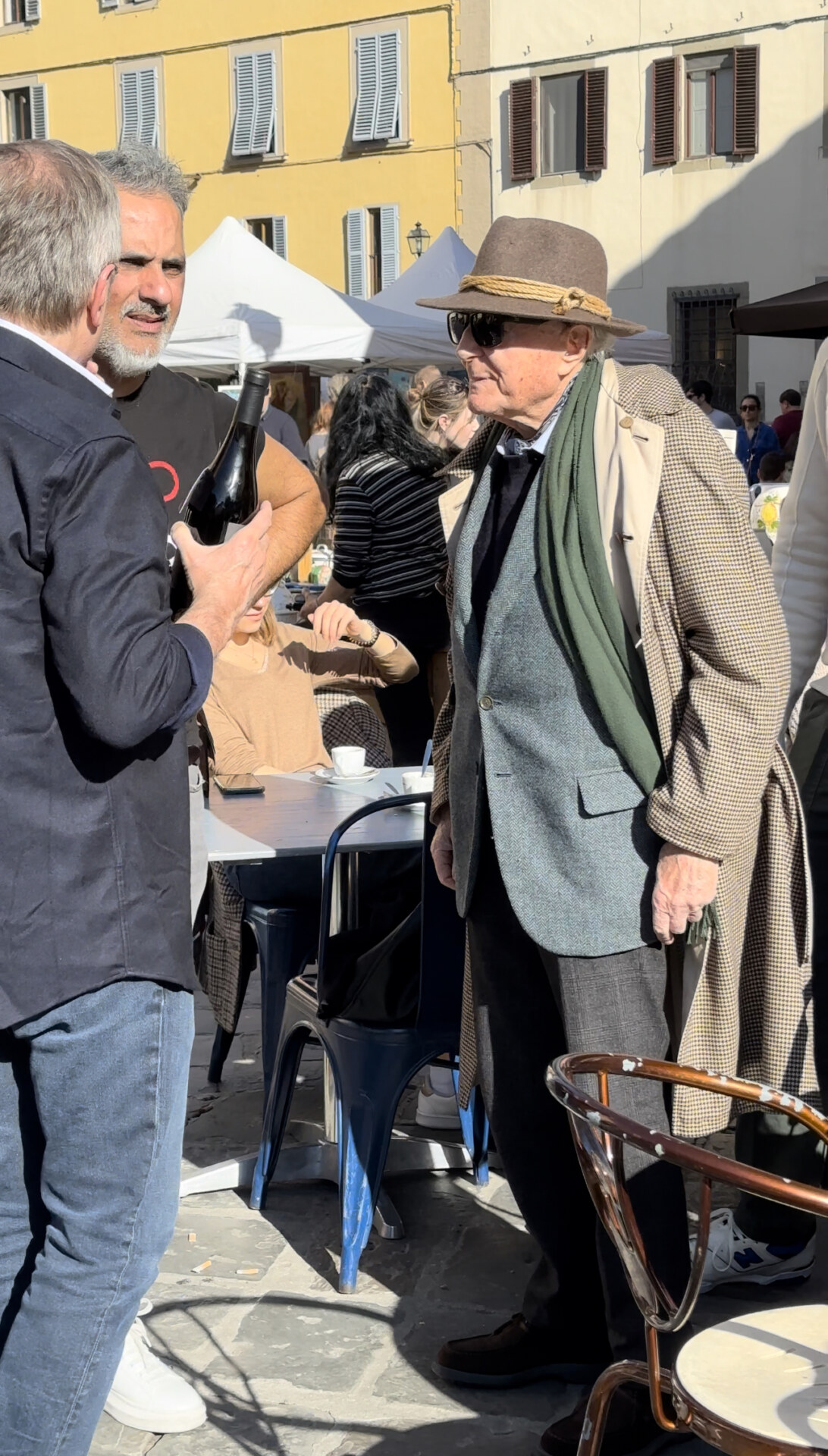
How To Find the Real Florence
Born-and-bred Florentines recall a time when the city wasn’t always trafficked year-round by tourists, when they could still go out in the city center, when they could still live there. That time, says Farinelli, is no more.
That inaccessibility dates back to at least 1990, when Florence instituted the restricted traffic zone in parts of the city center. The area covers about 8% of the entire heavily-trafficked area and has made it harder to simply enter the zone for a night out.
Airbnb’s arrival in the city in 2015 also ushered in a new wave of tourism affecting real estate. A 2018 study from the University of Siena showed that roughly 18% of the entire housing of Florence’s historical center was listed on Airbnb. At that time, Italy was the platform’s third largest market. The company is, in part, responsible for the scarcity of affordable rental options for locals in the city center.
“Florentines can’t go in the center anymore,” Farinelli says. “All the residents are old people. [The administration] has moved the nightlife outside of the center.”
Panerai remembers when she was young and Florence still had seasonal tourism. There were actually months—from October to March—when the city wasn’t overrun with tourists. But again, that time has passed.
Bernini and Perduca urge tourists to explore a different part of the city, like the surrounding countryside, which was once home to a rich farming lifestyle that ended, Bernini says, with World War II. And Perduca views the city as a sum not of its parts, but of its people.
“I would like Florence to be taken as a great opportunity not so much to visit museums, churches, and buildings, but to seize its energy, through the history of the people that have created the city over centuries, that have driven it to be what it is,” Perduca says. “Now that would be a wonderful trip.”



